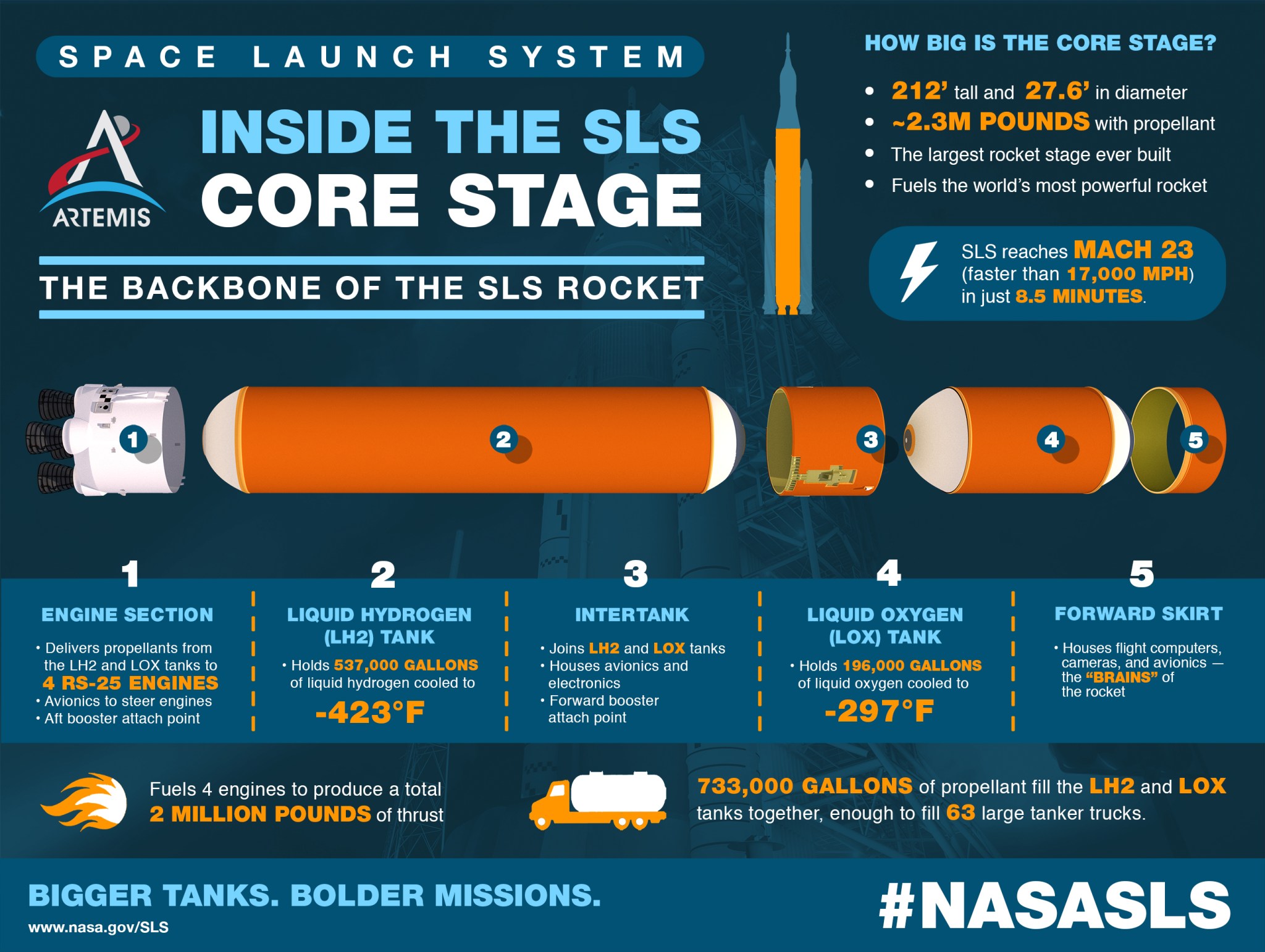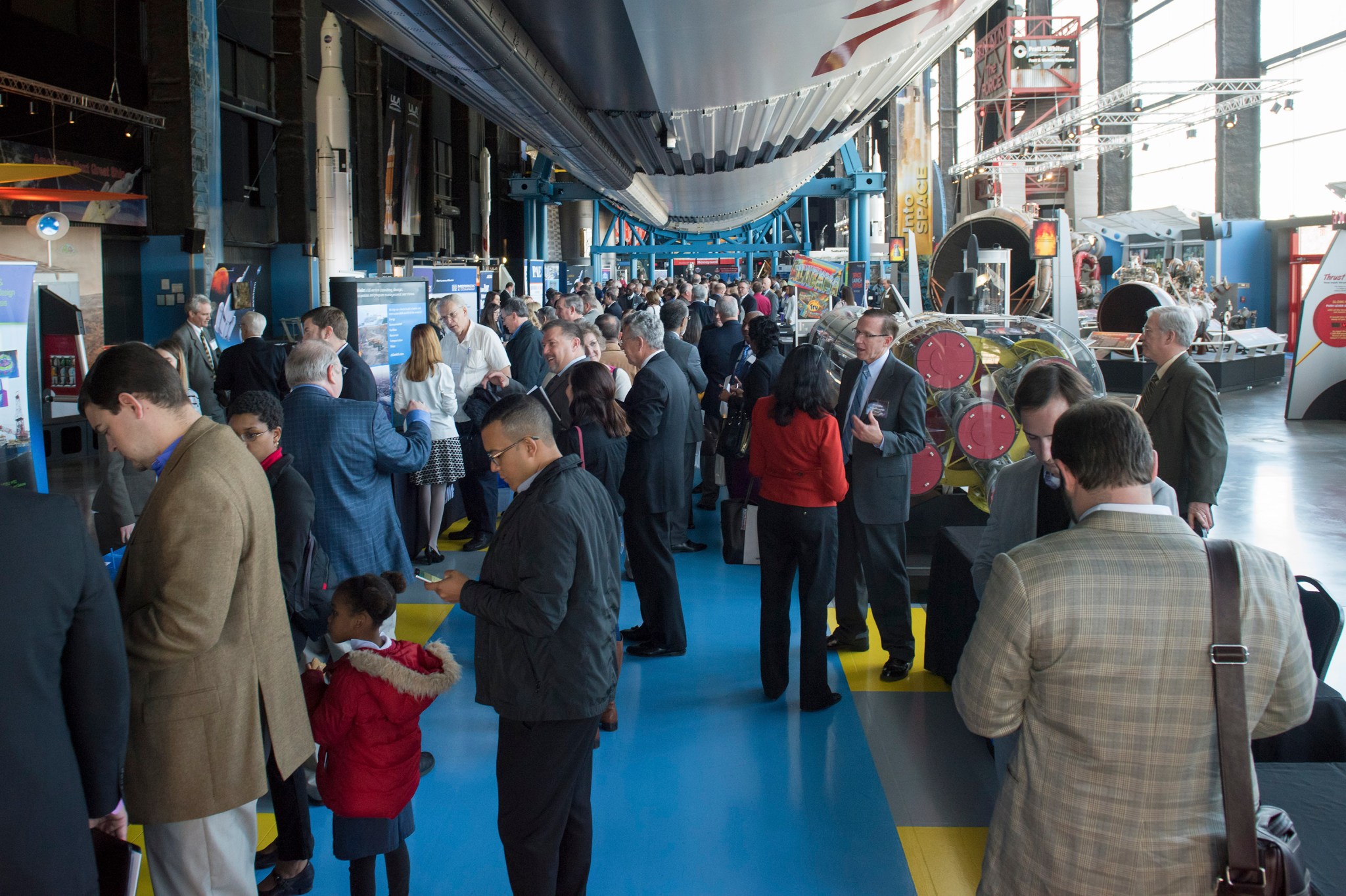In This Week’s Star
- Director’s Corner: Fundamentally Strong, Positioned for the Future
- Piece by Piece: Building Space Launch System’s Core Stage
- Bruce Tiller, Wayne Gamwell Presented Space Flight Awareness Management Awards
- Hundreds to Attend Marshall Small Business Alliance Meeting Sept. 22
- Team Redstone Members ‘Show Some Love’ at Annual CFC Kickoff
- NASA Associate Administrator Lightfoot Addresses Space Club Breakfast, Discusses SLS Progress
- This Week in NASA History: Solar Observatory Hinode Launches — Sept. 23, 2006
- Obituaries
Director’s Corner: Fundamentally Strong, Positioned for the Future
In July, I urged the Marshall Team to make this a “Summer of Progress” — to turn recent milestones into momentum that will carry the center in months ahead as we do the work needed to deliver on major program commitments and mission-critical priorities. And the Marshall Team stepped up and answered the call.
NASA’s Space Launch System moved one step closer to the launch pad after another round of successful RS-25 engine testing. Soon elements of SLS’s core stage will be on their way to Marshall for structural testing. It’s amazing to see such a state-of-the-art, deep-space exploration vehicle transform from concept to rocket. When I look out toward the southern horizon at the test stands under construction, I marvel at how we are all the new pioneers of spaceflight in the new millennium.
Last month more than 100 thought leaders, journalists and decision-makers were on hand at our journey to Mars event at the Michoud Assembly Facility. We wanted to show the world the game-changing work Marshall and its partners are doing to make the first human mission to Mars a reality — and by all accounts, the event was a success.
Marshall’s future is underwritten by the value of its work, and what we do is only possible because of the men and women that make up our team. The best approach the center can take with a presidential election imminent — and the inevitable changes that come with a new administration — is to ensure that the fundamental components of our organization are strong. And people are a core element of what makes an organization resilient to external change.
My responsibility — and that of your entire executive leadership team — is to do everything I can to ensure that Marshall is fundamentally strong and well positioned for the future. We have delivered, and continue to deliver, on all of our commitments — on budget and on time. From SLS and the International Space Station, to in-space propulsion, to astrophysics and other crucial scientific endeavors, there is no question that what we are pursuing is in the greater interest of this nation, the world and scientific progress. The United States is getting a great return on its investment in Marshall.
As we move toward the transition of administrations, my commitment to you is this: I will do everything in my power to keep you informed and engaged as I work with the center’s leadership on a plan to position Marshall for enduring success. There will always be some measure of uncertainty when it comes to political transition, but we also have a strong foundation of experience — and a higher mission — to build on as we prepare for the challenges ahead.
Piece by Piece: Building Space Launch System’s Core Stage
By Brian C. Massey
The largest rocket stage in the world is coming together piece by piece at NASA’s Michoud Assembly Facility. Large elements for NASA’s Space Launch System are in production and will be joined together to create the rocket’s 212-foot-tall core stage, the backbone of the SLS rocket.
SLS, the most powerful rocket ever built will enable NASA to send astronauts deeper into space than ever before, including on the journey to Mars. To power the rocket, SLS’s core stage carries around 2.3 million pounds of liquid hydrogen and liquid oxygen to fuel the four RS-25 engines. Engineers just completed welding the largest part of the core stage, the 130-foot-tall liquid hydrogen tank that will provide fuel for the first SLS flight in 2018, but there’s still work to ready the tank for its maiden voyage.
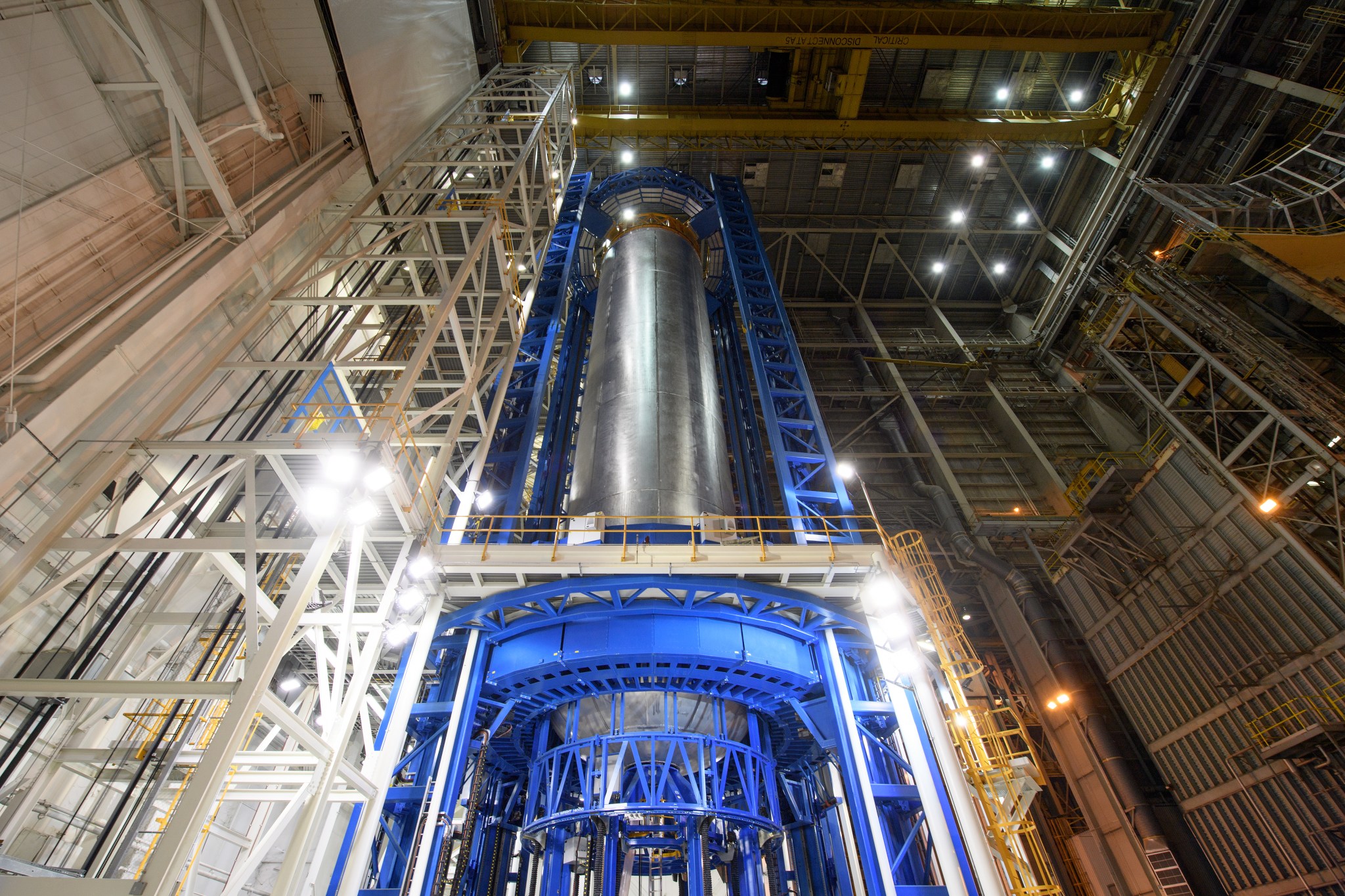
“Building the core stage is similar to building a house,” said Joan Funk, SLS core stage lead at NASA’s Marshall Space Flight Center. “With the massive, welded elements coming off the Vertical Assembly Center at Michoud, we’ve laid the foundation, framed the walls and put up the roof. The big items are in place. Now it’s time to get to work on the inside.” That’s where engineers will clean and prime each element before beginning the internal integration.
Michoud’s Vertical Assembly Center, the largest spacecraft-welding tool in the world, is welding many of the core stage’s main elements — the forward skirt, the liquid oxygen tank, the liquid hydrogen tank and the engine section. The core stage’s fifth element, the intertank, which is bolted, is also being built at Michoud. NASA and core stage prime contractor, the Boeing Company, headquartered in Chicago, have worked with 442 businesses across America, including 297 small businesses.
The final manufacturing processes and outfitting for each part of the core stage varies with the section’s function. Wet structures — elements that hold fuel, or the liquid oxygen and liquid hydrogen tanks — are put through “proof tests” to assure manufacturing quality. After testing, the tanks and dry structures — elements that don’t hold fuel, or the forward skirt, intertank and engine section — are cleaned, primed and readied for the “work on the inside.” Much like a house being constructed, the core stage is outfitted with wiring, plumbing and insulation.
Dry structures house flight computers, cameras and avionics — or the “brains” of the rocket. Carrying power and data from element to element, 45 miles of wire cabling will power flight computers, cameras, sensors, avionics and other electronics.
The core stage’s plumbing contains lines that deliver the propellant and oxidizer from the tanks to the engines. Each dry structure also contains purge vent lines and hazardous gas lines designed to eliminate dangerous gases building up in the dry structures prior to launch.
“The dry structures are cram-packed full of equipment and the domes of the tanks take up a lot of the room inside the dry structures,” said Funk. Equipment is mounted and wiring is placed methodically, accounting for time, space, accessibility and much more. When the dry structures are ready to be “stacked,” or joined to the other elements, there isn’t much room to spare.
Before the elements can be stacked, insulation is applied. NASA’s thermal protection system not only gives the rocket its signature orange color, but more importantly, it protects the core stage from the extreme temperatures encountered during launch and maintains the fuels’ extremely low temperatures.
With the initial wiring, plumbing and insulation complete, the elements are divided into two sections for stacking. Each section is stacked vertically, with elements bolted to one another using segmented support rings welded to each element, providing stiffness. The liquid hydrogen tank sits atop the engine section to create the aft section, and the forward skirt and intertank are bolted to the top and bottom of the liquid oxygen tank to create the forward section.
When complete, engineers “break over” the sections, or move them to a horizontal position, for their final assembly. Final wiring, plumbing and insulation are installed after the forward section is joined to the aft to complete the core stage assembly.
For more information about assembling SLS’s core stage, click here.
Massey, an ASRC Federal/Analytical Services employee and the Marshall Star editor, supports the Office of Strategic Analysis & Communications.
Bruce Tiller, Wayne Gamwell Presented Space Flight Awareness Management Awards
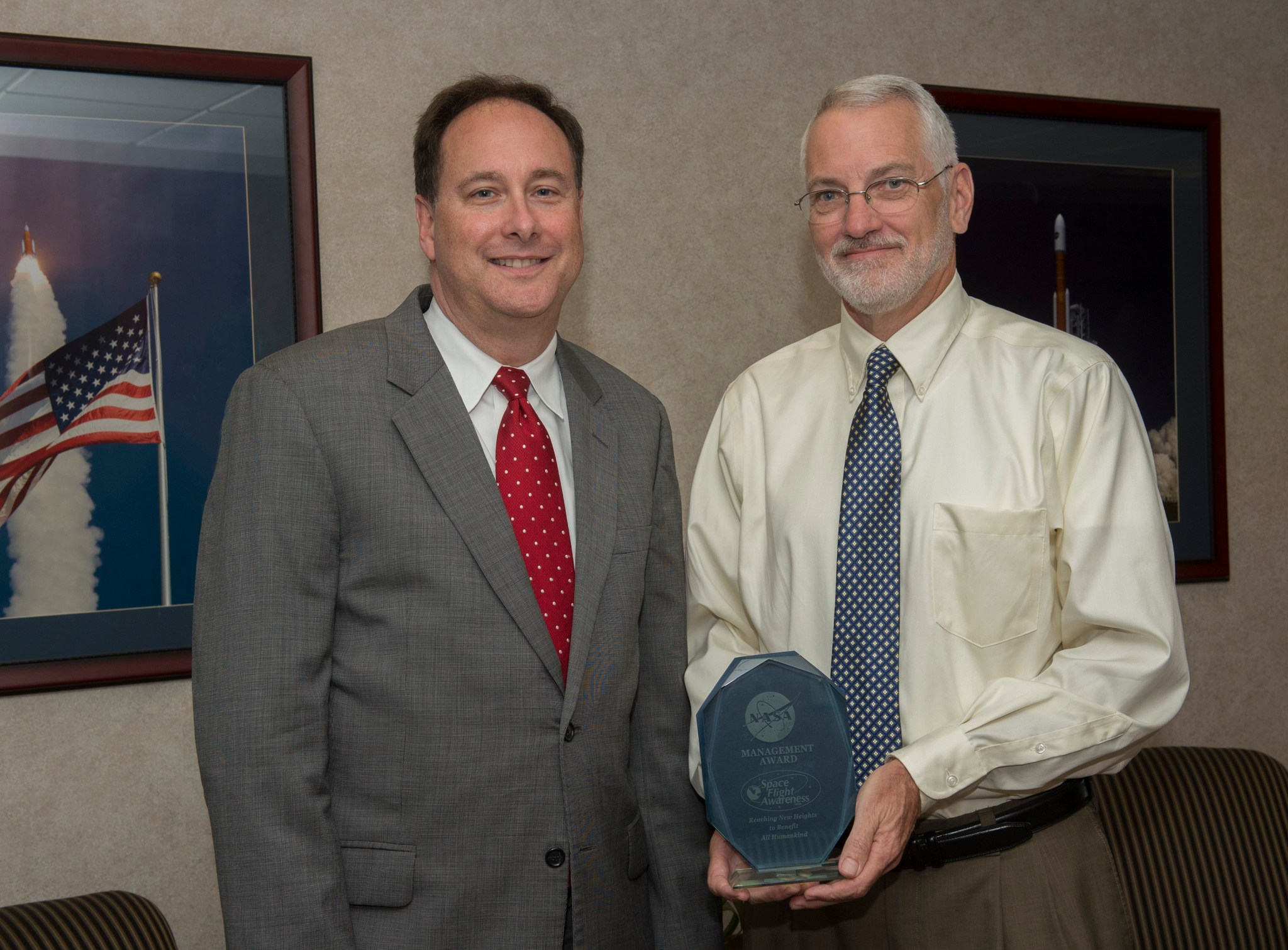
NASA Associate Administrator Robert Lightfoot, left, presents two Space Flight Awareness Management Awards to Marshall Space Flight Center team members during his Sept. 20 visit to Marshall. Bruce Tiller, right, deputy manager for the Space Launch System Booster Office, was cited for outstanding management of the SLS Booster Team and keeping the team focused on a successful Exploration Mission-1 flight. He was presented his award during an SLS all-hands meeting. (NASA/MSFC/Emmett Given)

Lightfoot, left, presents a SFA Management Award to Wayne Gamwell, right, of Marshall’s Materials and Processes Damage Tolerance Branch, for exemplifying outstanding leadership and excellent mentorship in the development of a highly motivated, and widely respected group of Tolerance Assessment engineers. The award was presented Sept. 20 during an Engineering Directorate meeting. (NASA/MSFC/Emmett Given)
Hundreds to Attend Marshall Small Business Alliance Meeting Sept. 22
More than 500 national representatives of large and small business prime contractors, subcontractors and NASA organizations, as well as dozens of exhibitors, will attend the 2016 Marshall Small Business Alliance Meeting Sept. 22 in Huntsville. This semi-annual meeting allows participants to learn how to pursue NASA procurement and subcontracting opportunities by networking with NASA Marshall Space Flight Center managers, Small Business Office staff and large business prime contractors. Hosted by Marshall, the meeting will be held at the Davidson Center for Space Exploration at the U.S. Space & Rocket Center from 8 a.m. to 12:30 p.m. Marshall speakers will include Steve Miley, director of the Office of Procurement; Jim Turner, associate director for technical management of the Engineering Directorate; Johnny Stephenson, director of the Office of Strategic Analysis & Communications; and small business specialist David Brock. (NASA/MSFC/Christopher Blair)
Team Redstone Members ‘Show Some Love’ at Annual CFC Kickoff
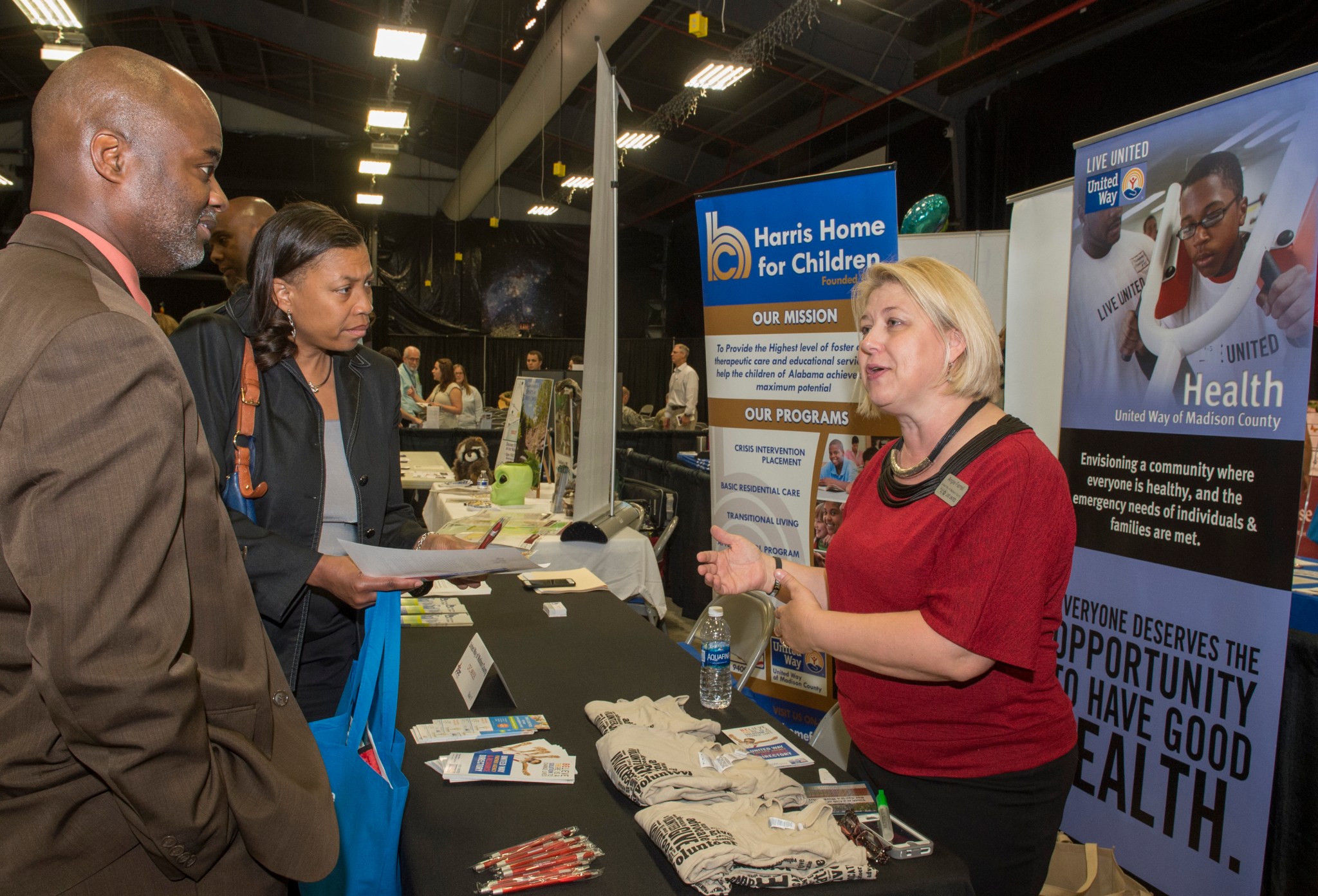
On Sept. 15, NASA’s Marshall Space Flight Center and Redstone Arsenal kicked off the Tennessee Valley Combined Federal Campaign with a local charity fair and opening ceremony in Marshall’s Activities Building 4316. From left, Larry Mack, Marshall’s deputy director of the Office of Human Capital, and Cassandra Pitts, executive assistant for the Office of Human Capital, listen as Angie Farrell, campaign manger for United Way of Madison County, explains how United Way supports education, financial stability and healthcare for individuals in the local community. The event featured more than 40 local, non-profit organizations that serve Madison County and support charitable efforts nationwide. This year’s CFC “Show Some Love” campaign continues through Dec. 15. For more information about CFC and how you can help meet Marshall’s fundraising goal of $600,000, please visit the CFC ExplorNet page. (NASA/MSFC/Emmett Given)
NASA Associate Administrator Lightfoot Addresses Space Club Breakfast, Discusses SLS Progress
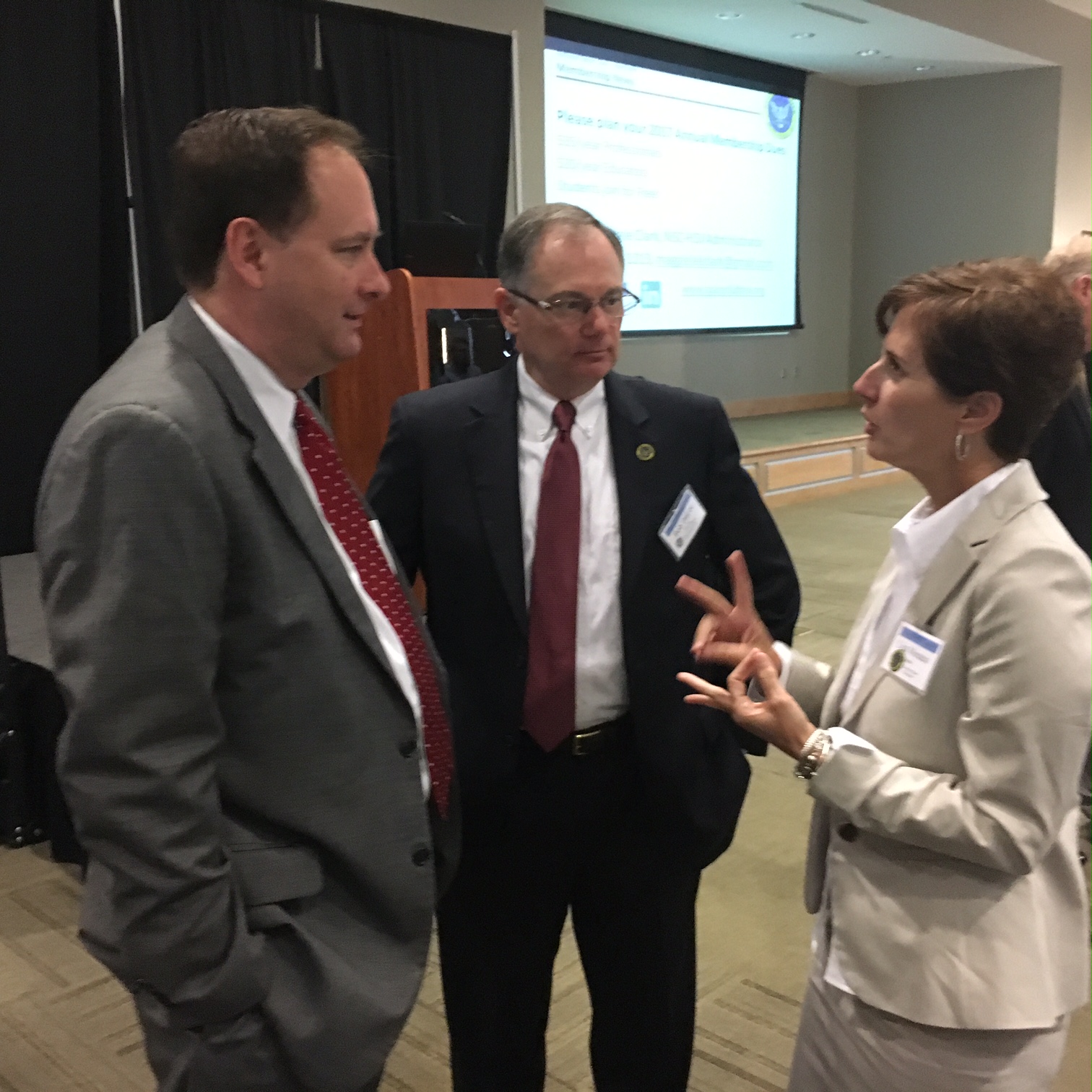
NASA Associate Administrator Robert Lightfoot, left, talks with National Space Club-Huntsville board members Bob DaLee, center, of The Boeing Co., and Lisa Monaco, of Jacobs Engineering, after addressing the club’s breakfast meeting at the Jackson Center on Sept. 20. Speaking to the breakfast crowd, Lightfoot, a former director of NASA’s Marshall Space Flight Center, said there is “more construction of hardware going on now than I’ve seen in my entire career” with the tremendous progress underway on NASA’s Space Launch System, Orion spacecraft and ground systems in preparation for the launch of Exploration Mission-1 in 2018. (NASA/MSFC/Jennifer Stanfield)
This Week in NASA History: Solar Observatory Hinode Launches — Sept. 23, 2006
This week in 2006, the Hinode spacecraft launched from Uchinoura Space Center in Japan. Designed to probe into the sun’s magnetic field to better understand the origin of solar disturbances, Hinode is one of NASA’s many missions devoted to exploring our solar system and beyond. NASA’s Marshall Space Flight Center managed development of three of Hinode’s instruments — the Solar Optical Telescope, X-ray Telescope and Extreme Ultraviolet Imaging Spectrometer. NASA’s exploration spans the cosmos, from observing the sun and its effects on Earth to delving deep into our solar system, looking beyond to worlds around other stars and probing the mysterious structures and the very origins of our universe. The NASA History Program is responsible for generating, disseminating and preserving NASA’s remarkable history and providing a comprehensive understanding of the institutional, cultural, social, political, economic, technological and scientific aspects of NASA’s activities in aeronautics and space. For more pictures like this one and to connect to NASA’s history, visit the History Program’s webpage. (NASA)
Obituaries
Fred M. Capley, 83, of Fayetteville, Tennessee, died Sept. 12. He retired from the Marshall Center in 1984 as a procurement analyst. He is survived by his wife, Hilda Capley.




























